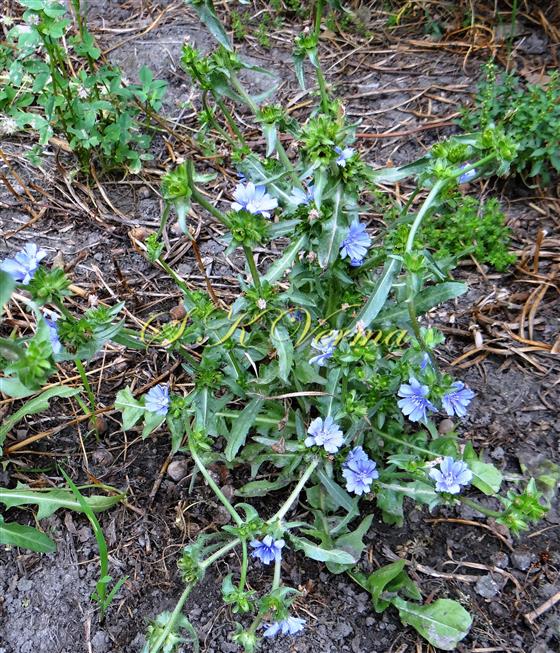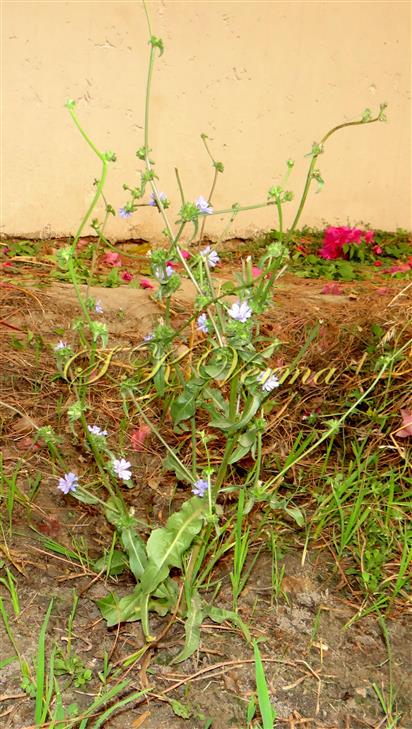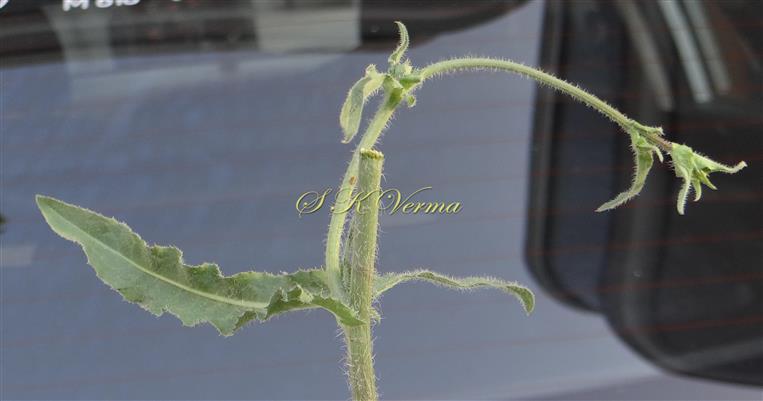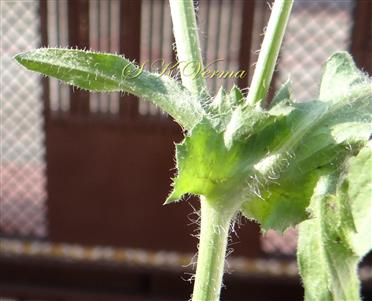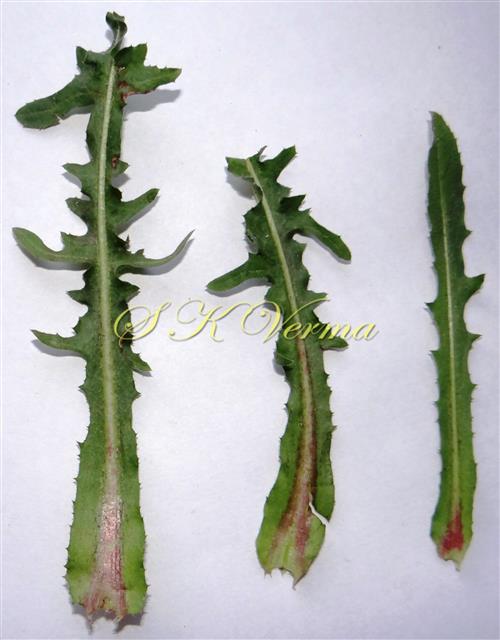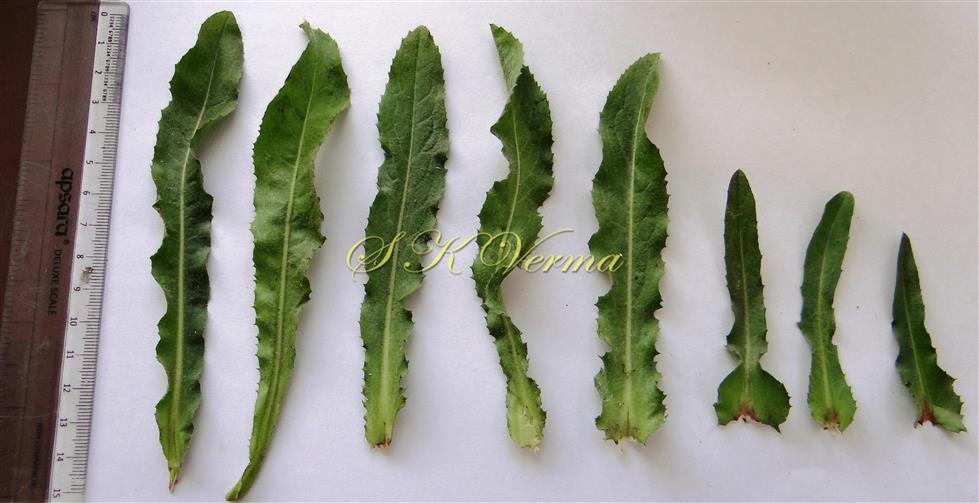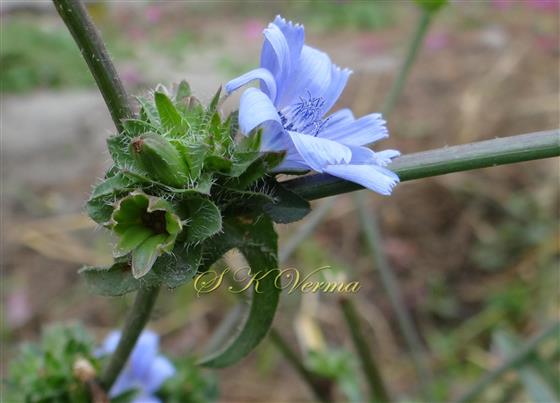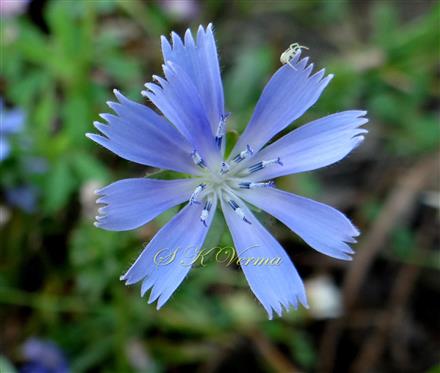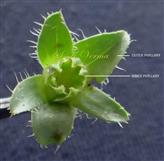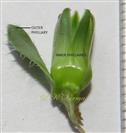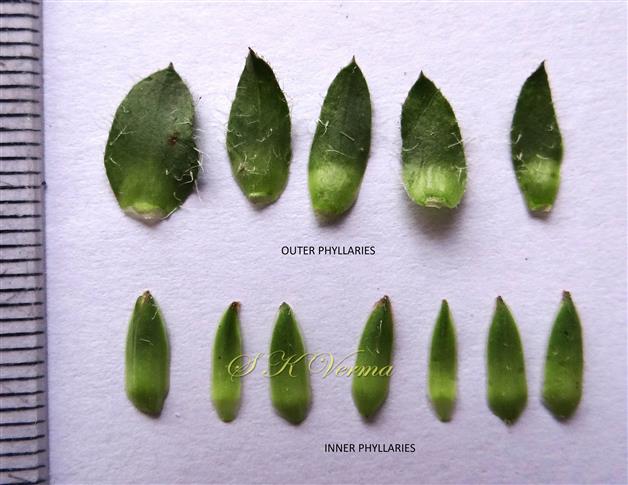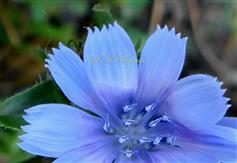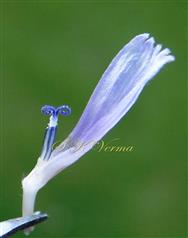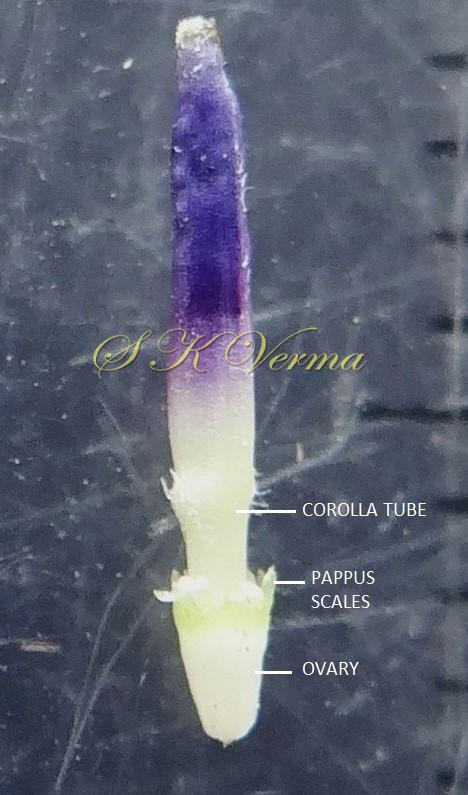CICHORIUM
Cichorium
L., Sp. Pl. 2: 813. 1753; Gen. Pl. ed. 5: 354. 1754; Shi & Kilan, Fl. China @ eFloras.org 20-21: 350; Strother, Fl. North Amer. @ eFloras.org 19-21: 221.
Annual, biennial or perennial herbs. Stem usually solitary, erect, branched distally or throughout; setose, hispid to pilose or glabrous. Leaves basal and cauline, usually sessile, margin usually runcinate- sinuate to dentate. Capitula homogamous, ligulate, mostly in glomerules (axillary and nearly sessile). Involucres cylindric, hardened in fruit. Phyllaries 10-15+ in 2 series; outer phyllaries centripetally longer, imbricate; inner phyllaries in one row, equal in length. Receptacle flat, epaleate. Florets 8-25+, homogamous, ligulate, bisexual, zygomorphic, bright blue. Cypselae subcylindric to obovoid, prismatic, 3-5-angular, surfaces smooth, apex truncate. Pappus white, many, a tiny crown of fimbriated subequal scales in 1-2 series.
7 species
Cichorium intybus
Cichorium intybus
L., Sp. Pl. 2: 813. 1753; Hook. f., Fl. Brit. Ind. 3: 391. 1882; Collett, Fl. Siml. ed. 2: 279. 1921 (Reprint 1980); Kaur & Sharma, Fl. Sirmaur 365. 2004; Singh & Sharma, Fl. Chamba Dist. 399. 2006; Fl. China @ eFloras.org 20-21: 350; Strother, Fl. North Amer. @ eFloras.org 21: 221.
Annual to perennial herb, 40-75 cm tall, with a strong tap root. Stem usually solitary, erect, angled or ribbed, divaricately much branched, often many from the base, branches spreading- ascending, setose with multicellular hairs. Leaves basal and cauline. Basal leaves rosulate, obovate to oblanceolate, 10-25 cm x 2-4 cm, lamina undivided, pinnatipartite to runcinately pinnatipartite, densely covered with long multicellular hairs, base clasping, lateral lobes 3-6+ pairs of unequal size, triangular or irregular shaped, terminal lobe distinctly larger than lateral ones, apex rounded to acute, mucronate; ultimate margins dentate. Cauline leaves: Lower cauline leaves nearly similar to basal leaves but smaller and less divided; middle and upper cauline leaves 6-15 cm x 1- 2.5 cm, simple, undivided, oblong-lanceolate, base attenuate or clasping the stem, apex acute, margin dentate and sinuate, both surfaces with multicellular hairs. Synflorescence of main axis and larger branches spiciform-paniculiform. Capitula axillary and terminal, solitary or in clusters of few, 4-10, sessile or on a several centimeters long thick and apically slightly inflated peduncle. Capitula 2.5-4 cm across, ligulate, with 9-13 florets. Involucre cylindric, 0.9-1.4 cm. Phyllaries foliaceous, in 2 series: outer phyllaries 5 or 6, spreading, recurved 10-12 mm x 4-8 mm, broadly ovate, lanceolate mucronate, hairy on both surfaces, margin ciliate; inner phyllaries mostly 8, erect, cylindrical, 8-9 mm x 2-3 mm, linear-lanceolate, acute, spreading, hairy abaxially. Receptacle flat, epaleate, pitted, +/- hispid. Florets 12-20, blue, ligulate, bisexual, zygomorphic. Corolla tube short, ca. 1 mm long; limb ca. 6 mm x 2-2.5 cm, truncate, 5-toothed, spreading, long-hairy on back (abaxially), turning white after anthesis. Anthers ca. 3 mm long, blue purple. Ovary 1.25 mm x 1 mm; style ca. 4 mm long; style arms long, blue purple; pappus of 1 or 2 series of short blunt erect scales. Cypselae brown, subcylindric to obovoid, 2-3 mm, stout, prismatic, 3-5- angled, apex truncate, smooth, glabrous. Pappus scales +/- 0.2 mm long in a ring.
Common Names: Common Cichory, Blue Sailors, Succory, Coffee weed; Kasni (Hindi)
